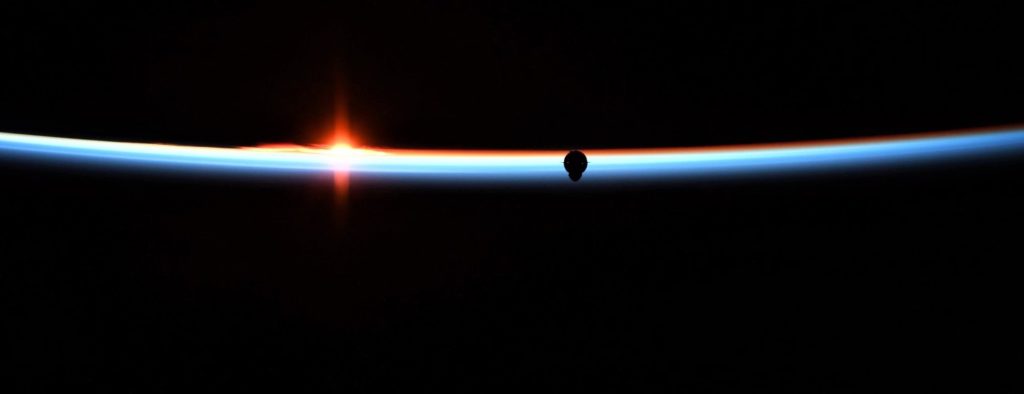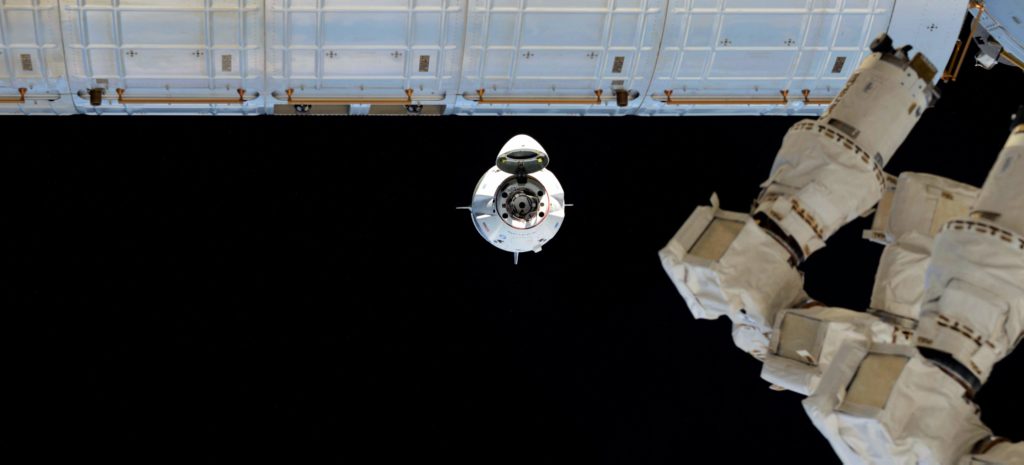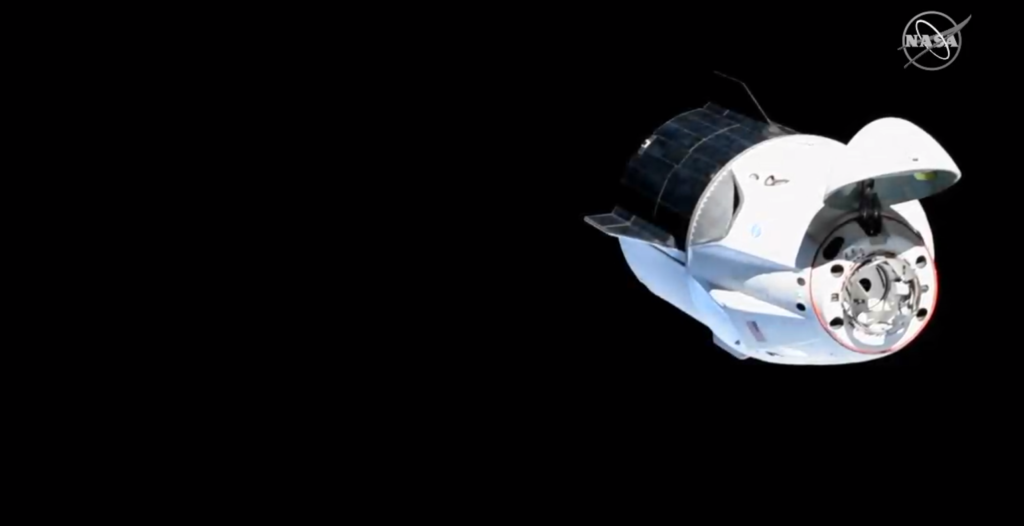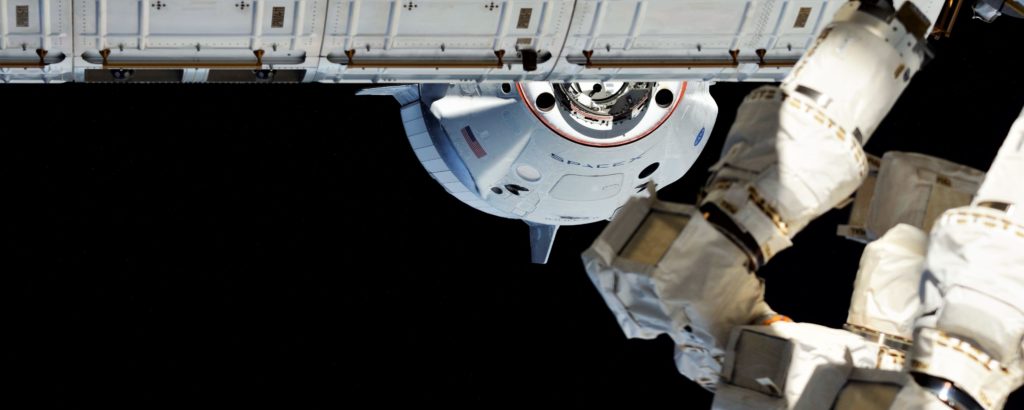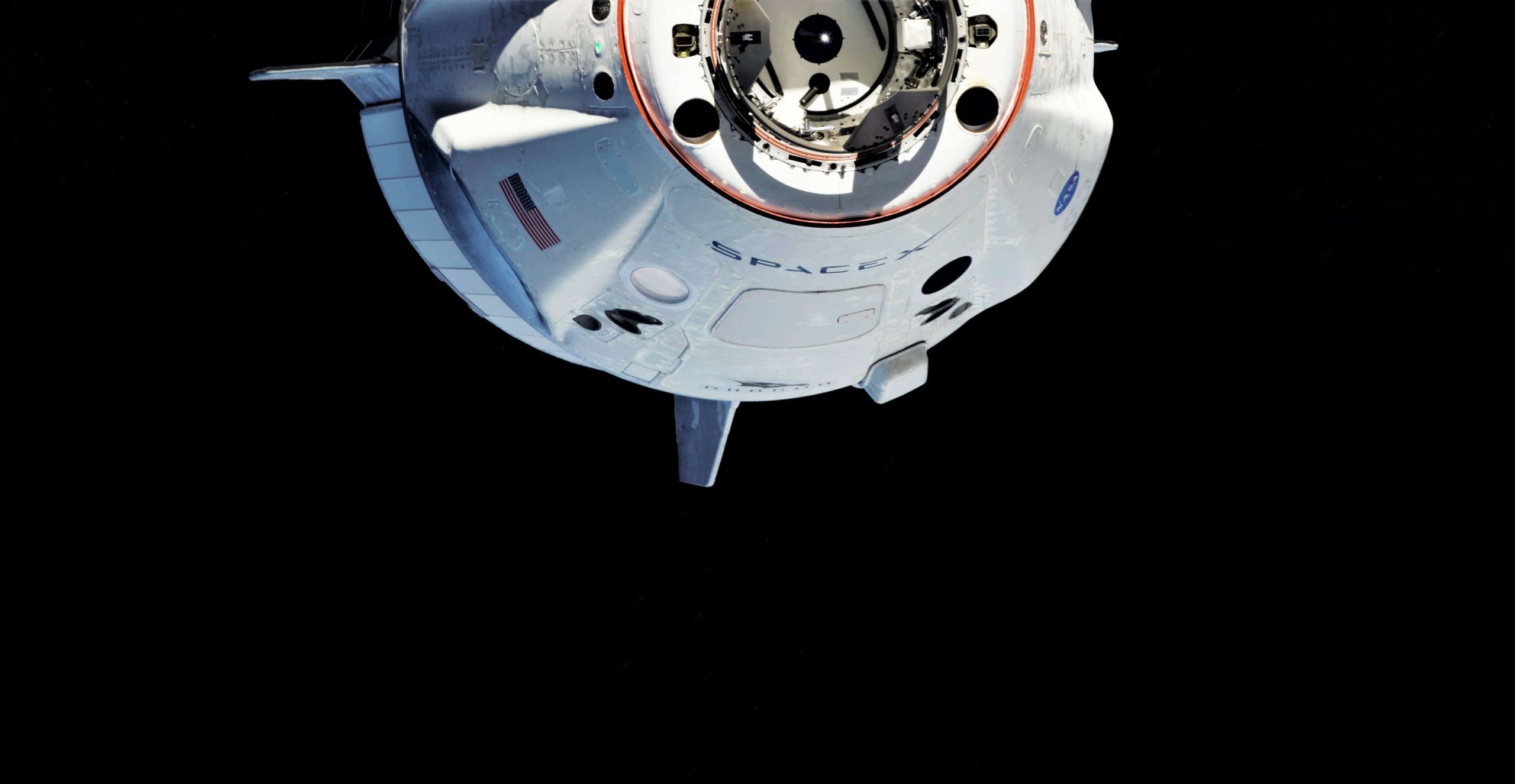
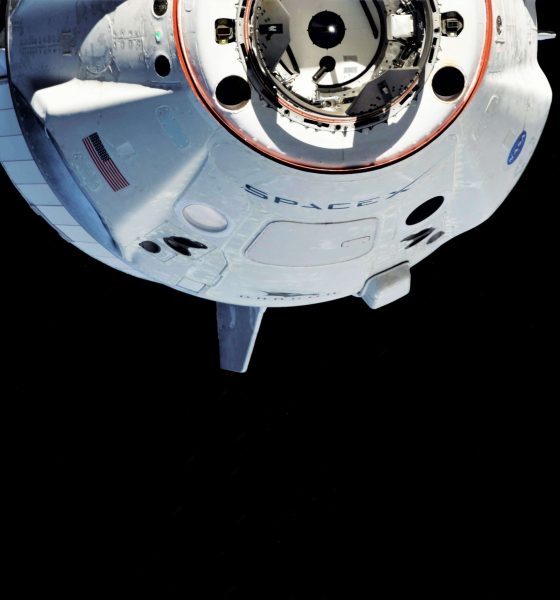
SpaceX
SpaceX’s Crew Dragon spaceship shown off in first high-res orbital portraits
Taken by Russian cosmonaut Oleg Kononenko, the first high-resolution photos of SpaceX’s Crew Dragon spacecraft have begun to trickle in, offering the best views yet of the advanced human-rated spacecraft in its natural habit: Earth orbit.
Filling in for a distinct and uncharacteristic lack of official photos from NASA, the spacecraft’s inaugural spaceflight had thus far only been documented through NASA’s own live coverage of its International Space Station (ISS) rendezvous, limited to a relatively low-quality stream. With Oleg’s extremely high-resolution captures, we can begin to see SpaceX’s Crew Dragon with a level of detail previously only seen (if ever) on the ground.
Stunning photos of Dragon 2 docking from Oleg Kononenko! https://t.co/Lu9zlKFPt9
He was monitoring from the Russian section, near the Soyuz, due to Rocosmos contingency procedures.
Hires set:https://t.co/lFuRSzlvpQ pic.twitter.com/6wrBqVDPOP
— NSF – NASASpaceflight.com (@NASASpaceflight) March 4, 2019
In all fairness to NASA, the ISS is operating with just three crew members, only one of which – Anne McClain – is a NASA astronaut. Particularly the case for an operation as critical as Crew Dragon’s inaugural orbital docking attempt, the task of controlling space vehicle rendezvous typically requires the full attention of one or two onboard astronauts – in this case, NASA’s Anne McClain and Canadian Space Agency (CSA) astronaut David Saint-Jacques. Veteran Russian cosmonaut Oleg Kononenko, however, was required by Roscosmos to remain in the Russian segment of the ISS in the event of a catastrophic anomaly during Crew Dragon’s approach to the station.
Just prior to launch, NASA broke the news that its Russian ISS partners had expressed concerns about the design of Crew Dragon’s approach trajectory, mainly focusing on the fact that a loss of control or communications while moving towards the station would leave no way for the spacecraft to naturally slow down. In other words, a dead spacecraft with a forward velocity would simply continue moving forward until it impacted the ISS, a bit like a semi-truck crash in slow motion (i.e. < 0.5 m/s or 1 mph). Weighing a hefty 12 tons (~26,600 lbs) during the arrival, even an extremely low-speed impact could undoubtedly do some damage to the ISS, although an actual hull breach (and thus a need to evacuate) would be extraordinarily unlikely. Still, Oleg was unable to significantly assist during the rendezvous itself, although the cosmonaut was front and center after Crew Dragon’s successful capture.

Taking advantage of the opportunity to observe, the cosmonaut was able to take a number of photos of Crew Dragon’s arrival, although the location of its docking port makes for a less than optimal perspective. Still, it’s hard to complain about any extremely high-quality photos of Crew Dragon, and Oleg’s are nothing short of spectacular. Highlighting the spacecraft’s nose section and docking port hardware, as well as limited views of its trunk section and body, this is quite possibly the first time SpaceX’s newest vehicle has been publicly shown off at this level of detail.
This privileged view includes a detailed look at Crew Dragon’s Draco maneuvering thrusters (elongated black ovals below SpaceX logo), two shrouds containing half of its SuperDraco abort thrusters (beneath the NASA meatball and flag emblem), the ‘Dragon Claw’ latch connecting the capsule and trunk (a smooth rectangle in the lower right), and even a (likely) duo of LIDAR arrays to the left and right of the docking adapter ring. Other notable appearances include the disposable trunk section’s radiators (a series of white rectangles visible on the left) and empennage, four fins meant to provide aerodynamic stability in the event of an abort. Just out of view is trunk’s sculpture-like solar array, curved to fit along the upper (relative) half of the section and fixed in place to minimize failure modes associated to deployable solar arrays like those used on Cargo Dragon.
- Crew Dragon is backlit by an orbital sunrise over Earth’s limb on its inaugural March 2019 spaceflight. (Anne McClain)
- Crew Dragon’s ISS approach. (Oleg Kononenko)
- A better view of the solar array half of Crew Dragon’s trunk section. (NASA)
- Cloooooser… (Oleg Kononenko)
- (Oleg Kononenko)
After completing its successful space station docking debut on the morning of March 3rd, Crew Dragon is scheduled to depart the ISS and reenter Earth’s atmosphere for a soft landing in the Atlantic Ocean around 9 am PST (14:00 UTC) on March 8th. According to the SpaceX and NASA hosts of the live docking coverage, Crew Dragon’s DM-1 departure from the ISS will also be treated to a hosted webcast, potentially all the way through reentry and recovery aboard the customized SpaceX vessel GO Searcher. According to CEO Elon Musk, there is a slight but present chance of anomalous behavior during reentry due to aerodynamic instability caused by the shrouds covering Crew Dragon’s unique SuperDraco abort system, while NASA continues to have concerns (largely unexplained) about the spacecraft’s redundant parachute system.
Regardless of technical concerns, Crew Dragon’s reentry will be the final critical challenge in the way of completing its first demonstration launch (DM-1), proceeded by a flawless launch and equally flawless docking. If successful, it will explicitly pave the way for the spacecraft’s second demonstration mission (DM-2), in which two NASA astronauts will be transported to the ISS. That major milestone could occur as early as July, although slips are probable.
Check out Teslarati’s newsletters for prompt updates, on-the-ground perspectives, and unique glimpses of SpaceX’s rocket launch and recovery processes!

News
SpaceX shades airline for seeking contract with Amazon’s Starlink rival

SpaceX employees, including its CEO Elon Musk, shaded American Airlines on social media this past weekend due to the company’s reported talks with Amazon’s Starlink rival, Leo.
Starlink has been adopted by several airlines, including United Airlines, Qatar Airways, Hawaiian Airlines, WestJet, Air France, airBaltic, and others. It has gained notoriety as an extremely solid, dependable, and reliable option for airline travel, as traditional options frequently cause users to lose connection to the internet.
Many airlines have made the switch, while others continue to mull the options available to them. American Airlines is one of them.
A report from Bloomberg indicates the airline is thinking of going with a Starlink rival owned by Amazon, called Leo. It was previously referred to as Project Kuiper.
American CEO Robert Isom said (via Bloomberg):
“While there’s Starlink, there are other low-Earth-orbit satellite opportunities that we can look at. We’re making sure that American is going to have what our customers need.”
Isom also said American has been in touch with Amazon about installing Leo on its aircraft, but he would not reveal the status of any discussions with the company.
The report caught the attention of Michael Nicolls, the Vice President of Starlink Engineering at SpaceX, who said:
“Only fly on airlines with good connectivity… and only one source of good connectivity at the moment…”
CEO Elon Musk replied to Nicolls by stating that American Airlines risks losing “a lot of customers if their connectivity solution fails.”
American Airlines will lose a lot of customers if their connectivity solution fails
— Elon Musk (@elonmusk) December 14, 2025
There are over 8,000 Starlink satellites in orbit currently, offering internet coverage in over 150 countries and territories globally. SpaceX expands its array of satellites nearly every week with launches from California and Florida, aiming to offer internet access to everyone across the globe.
Currently, the company is focusing on expanding into new markets, such as Africa and Asia.
News
Tesla hints at Starlink integration with recent patent
“By employing polymer blends, some examples enable RF transmission from all the modules to satellites and other communication devices both inside and outside the vehicle.”

Tesla hinted at a potential Starlink internet terminal integration within its vehicles in a recent patent, which describes a vehicle roof assembly with integrated radio frequency (RF) transparency.
The patent, which is Pub. No U.S. 2025/0368267 describes a new vehicle roof that is made of RF-transparent polymer materials, allowing and “facilitating clear communication with external devices and satellites.”
Tesla believes that a new vehicle roof design, comprised of different materials than the standard metallic or glass elements used in cars today, would allow the company to integrate modern vehicular technologies, “particularly those requiring radio frequency transmission and reception.
Tesla has recently filed a US patent application on integrating RF transparent materials into the roof structure.
“facilitating clear communication with external devices and satellites”
Tesla fleet is getting @Starlink connectivity integration soon. LFG @Tesla @elonmusk… pic.twitter.com/bLa8YtPLd1
— Chansoo Byeon (@Chansoo) December 9, 2025
Instead of glass or metallic materials, Tesla says vehicles may benefit from high-strength polymer blends, such as Polycarbonate, Acrylonitrile Butadiene Styrene, or Acrylonitrile Styrene Acrylate.
These materials still provide ideal strength metrics for crashworthiness, stiffness for noise, vibration, and harshness control, and are compliant with head impact regulations.
They would also enable better performance with modern technologies, like internet terminals, which need an uninterrupted signal to satellites for maximum reception. Tesla writes in the patent:
“By employing polymer blends, some examples enable RF transmission from all the modules to satellites and other communication devices both inside and outside the vehicle.”

One of the challenges Tesla seems to be aware of with this type of roof design is the fact that it will still have to enable safety and keep that at the forefront of the design. As you can see in the illustration above, Tesla plans to use four layers to increase safety and rigidity, while also combating noise and vibration.
It notes in the patent that disclosed examples still meet the safety requirements outlined in the Federal Motor Vehicle Safety Standards (FMVSS).
Starlink integrated directly into Tesla vehicles would be a considerable advantage for owners. It would come with a handful of distinct advantages.
Initially, the inclusion of Starlink would completely eliminate cellular dead zones, something that is an issue, especially in rural areas. Starlink would provide connectivity in these remote regions and would ensure uninterrupted service during road trips and off-grid adventures.
It could also be a critical addition for Robotaxi, as it is crucial to have solid and reliable connectivity for remote monitoring and fleet management.
Starlink’s growing constellation, thanks to SpaceX’s routine and frequent launch schedule, will provide secure, stable, and reliable internet connectivity for Tesla vehicles.
Although many owners have already mounted Starlink Mini dishes under their glass roofs for a similar experience, it may be integrated directly into Teslas in the coming years, either as an upgrade or a standard feature.
Investor's Corner
SpaceX IPO is coming, CEO Elon Musk confirms
However, it appears Musk is ready for SpaceX to go public, as Ars Technica Senior Space Editor Eric Berger wrote an op-ed that indicated he thought SpaceX would go public soon. Musk replied, basically confirming it.

Elon Musk confirmed through a post on X that a SpaceX initial public offering (IPO) is on the way after hinting at it several times earlier this year.
It also comes one day after Bloomberg reported that SpaceX was aiming for a valuation of $1.5 trillion, adding that it wanted to raise $30 billion.
Musk has been transparent for most of the year that he wanted to try to figure out a way to get Tesla shareholders to invest in SpaceX, giving them access to the stock.
He has also recognized the issues of having a public stock, like litigation exposure, quarterly reporting pressures, and other inconveniences.
However, it appears Musk is ready for SpaceX to go public, as Ars Technica Senior Space Editor Eric Berger wrote an op-ed that indicated he thought SpaceX would go public soon.
Musk replied, basically confirming it:
As usual, Eric is accurate
— Elon Musk (@elonmusk) December 10, 2025
Berger believes the IPO would help support the need for $30 billion or more in capital needed to fund AI integration projects, such as space-based data centers and lunar satellite factories. Musk confirmed recently that SpaceX “will be doing” data centers in orbit.
AI appears to be a “key part” of SpaceX getting to Musk, Berger also wrote. When writing about whether or not Optimus is a viable project and product for the company, he says that none of that matters. Musk thinks it is, and that’s all that matters.
It seems like Musk has certainly mulled something this big for a very long time, and the idea of taking SpaceX public is not just likely; it is necessary for the company to get to Mars.
The details of when SpaceX will finally hit that public status are not known. Many of the reports that came out over the past few days indicate it would happen in 2026, so sooner rather than later.
But there are a lot of things on Musk’s plate early next year, especially with Cybercab production, the potential launch of Unsupervised Full Self-Driving, and the Roadster unveiling, all planned for Q1.
